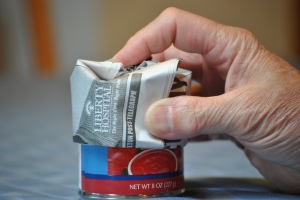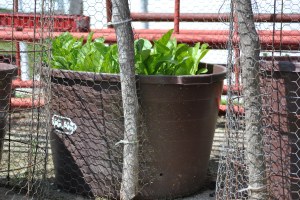In honor of Earth Week, I’m posting how origami-challenged people like me can make seed starting pots from newspapers without using tape or staples.
Only three items are needed:
- Newspapers
- 8 oz tomato sauce can (or any can of similar size with no tapered end)
- 8 oz plastic yogurt containers
Instructions:
- Pull out a two-page section of the newspaper (regular newspaper, not glossy or slick paper)
- Fold the paper lengthwise.
- Fold the paper lengthwise again.
- Place tomato sauce can on the paper about 1 ½ inches from the bottom edge.

- Roll the newspaper tightly around the can.
- Fold the edges over the end of the can.

- Place the can over the yogurt container and slip the paper off the can and into the container.

Fill the container with soil and you’re ready to plant.
Of course, the yogurt container is not biodegradable, so it must be slipped off when transplanting seedlings into the soil. But the paper is biodegradable and works just like a peat pot.
As you can tell, I’m a fan of yogurt containers because they prevent a lot of water and soil mishaps and are easy means of transporting the seedlings.
It’s time for me to start my zucchini and watermelon seeds. Looks like I have some pots ready to go!
Happy Earth Week!
 My lettuce looks like it’s being held in a penitentiary. The woven wire that guards it is really not meant to keep the lettuce from escaping, but rather to keep the groundhogs and rabbits from destroying it. It’s a bit elaborate, I’ll admit, but it has kept the lettuce safe.
My lettuce looks like it’s being held in a penitentiary. The woven wire that guards it is really not meant to keep the lettuce from escaping, but rather to keep the groundhogs and rabbits from destroying it. It’s a bit elaborate, I’ll admit, but it has kept the lettuce safe.




